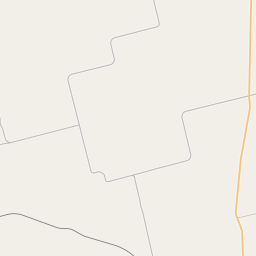Adair-Steadman Site
Historical marker location:






In this vicinity is a prehistoric archeological site discovered in 1969 near the Clear Fork of the Brazos River. Archeologists have conducted extensive scientific excavations and attribute most of the cultural materials to the Paleo-Indian Period. The Adair-Steadman Site was a large base campsite for makers of fluted points, who were part of the distinctive Folsom culture between nine and eleven thousand years ago. Prehistoric peoples chose to live here because of the availability of water at the time of occupation and the presence of a large stone resource area nearby. Stone tools and other material recovered include fluted point fragments, point preforms, channel flakes, scrapers, gravers, and large bifaces. Future archeological, geological, and paleontological studies of the site may yield sufficient data to reconstruct the physical appearance of the site during its period of occupation. One of the most significant locations of Folsom artifacts in North America, the Adair-Steadman Site is important as a valuable source of information on the prehistory of the state, the nation, and the entire continent. It is protected from disturbance by federal and state antiquities laws. (1984)
As one of the most visible programs of the Texas Historical Commission (THC), historical markers commemorate diverse topics in Texas history, including: the history and architecture of houses, commercial and public buildings, religious congregations, and military sites; events that changed the course of local and state history; and individuals who have made lasting contributions to the state, community organizations, and businesses.
The first domed stadium in the world, the Astrodome, was built in Houston in 1965 and hosted numerous sporting events and concerts over the years.
The early settlers of Fisher County were primarily ranchers and farmers who were attracted to the fertile land and abundance of water sources, particularly the Colorado River. These pioneers faced many challenges, including severe weather conditions and conflicts with Native American tribes in the area. However, they persevered and gradually developed thriving communities, mainly centered around farming and ranching.
The arrival of the railroad in the late 1800s greatly enhanced the county's economic development. The railroad allowed for the transport of goods and improved access to markets, leading to the growth of towns such as Roby and Rotan. With the expansion of the rail network, Fisher County became an important transportation hub in the region.
In the 20th century, Fisher County faced some setbacks, including the effects of the Great Depression and a decline in population due to the mechanization of farming. However, the discovery of oil and gas reserves in the area in the 1940s provided a boost to the local economy. Today, Fisher County continues to rely on agriculture, oil and gas, and small businesses as its main economic drivers, while also preserving its historical heritage through museums and cultural events.
Fisher County Timeline
This timeline provides a glimpse into the major events and milestones that have shaped the history of Fisher County, Texas.
- 1870: Fisher County was established on February 1, 1876, and named after Samuel Rhoads Fisher, a signer of the Texas Declaration of Independence.
- 1880s: The first settlement in the area was established near the Clear Fork of the Brazos River.
- 1890s: The county experienced a population boom with the arrival of the Texas Central Railroad.
- 1911: The town of Roby was designated as the county seat of Fisher County.
- 1930s: Fisher County, like the rest of the country, was greatly affected by the Great Depression.
- 1940s: The discovery of oil and gas in the county led to economic growth and increased population.
- 1970s: The county faced economic challenges due to declining oil prices.
- 2000s: Fisher County continued to be primarily agricultural, with farming and ranching as the main economic activities.